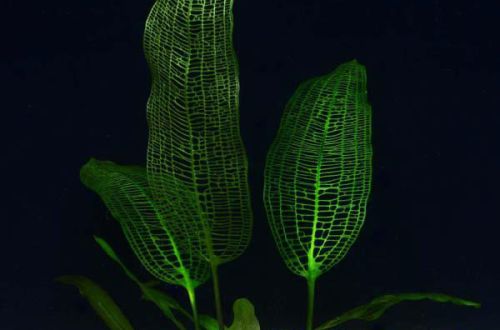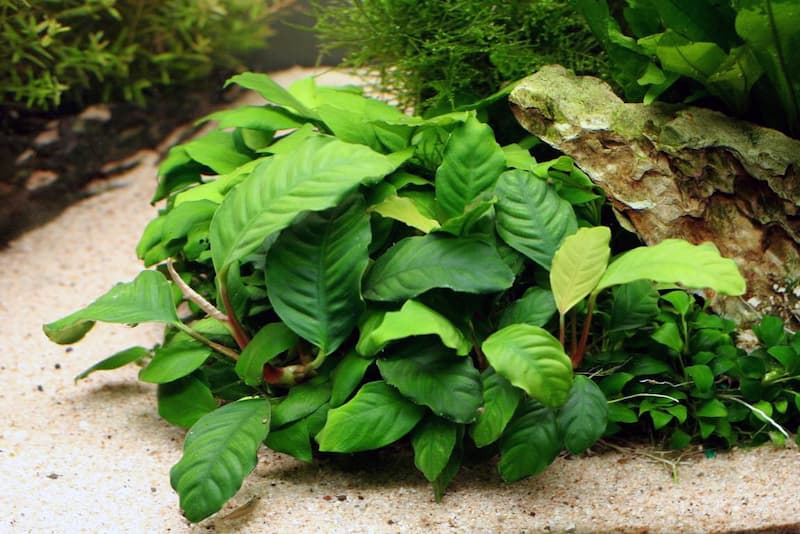
Anubias Barter
Anubias Bartera, scientific name Anubias barteri var. Barteri, named after the plant collector Charles Barter. It is a popular and widespread aquarium plant, mainly due to its low maintenance requirements.

In its natural habitat in the southeast of West Africa, it grows in shady sections of rivers and streams with a fairly fast flow. Attached to the trunks of fallen trees, stones. In the wild, in most cases, it grows above the surface of the water or in a partially submerged state.
Young shoots of Anubias Barter can be distinguished from similar Anubias Nana (Anubias barteri var. Nana) by longer petioles.
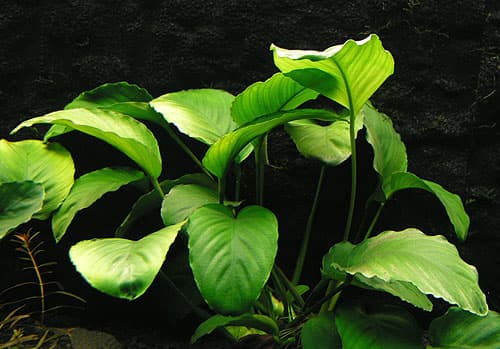
Anubias Bartera is able to grow in low light on nutrient-poor soils. For example, in new aquariums, it may even just float on the surface. Does not require artificial supply of carbon dioxide. A strong root system allows it to withstand moderate to strong currents and hold the plant securely on surfaces such as wood and stones.
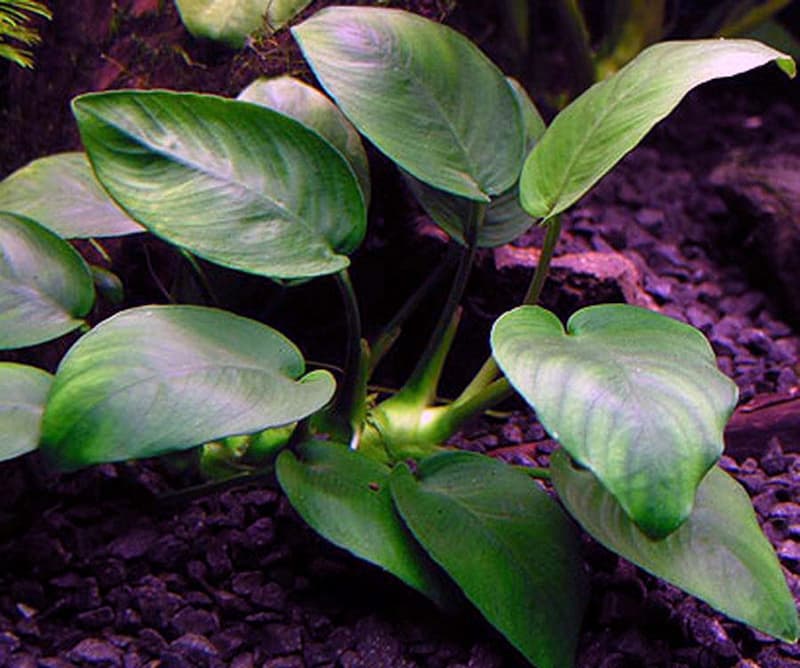
It grows slowly and is often covered with unwanted algae such as Xenococus. It is noted that a moderate current in bright light helps to resist dotted algae. To reduce spot algae, a high phosphate content (2 mg/l) is recommended, which also promotes the formation of flowers in the emersed position.
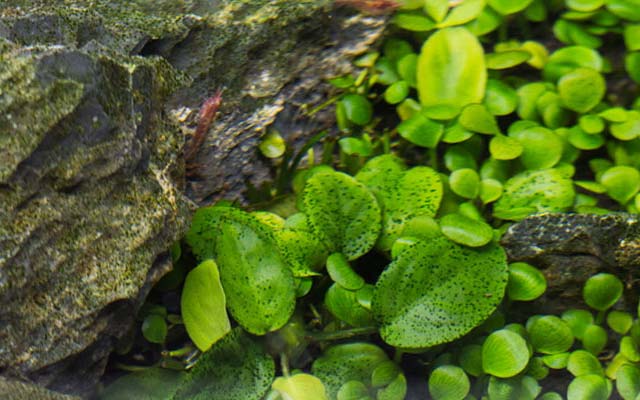
Reproduction in aquariums occurs by dividing the rhizome. It is recommended to separate the part on which new side shoots are formed. If they are not separated, they begin to grow next to the mother plant.
Although in nature this plant grows above water, in aquariums it is acceptable to use it completely submerged in water. In favorable conditions, it grows, forming bushes up to 40 cm wide and high. It is desirable to use materials like wood as the basis for rooting. It can be planted in the ground, but the rhizome must not be covered, otherwise it may rot.
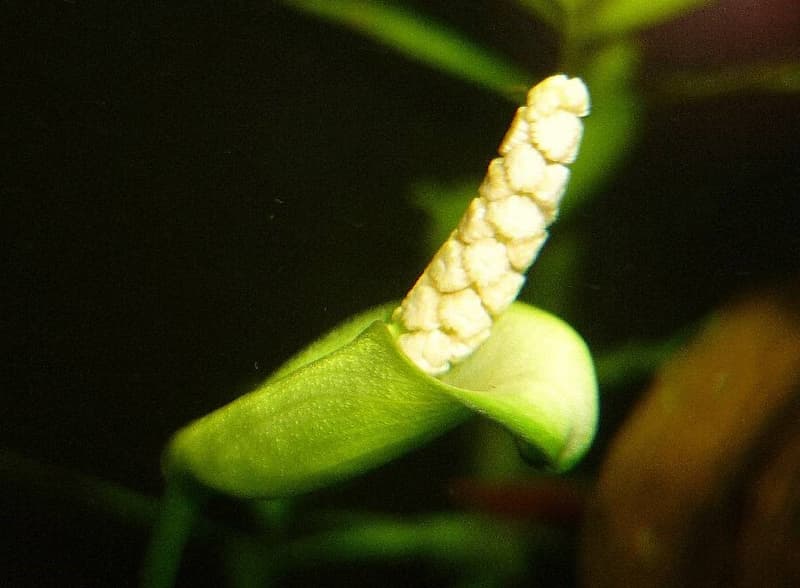
In the design of aquariums, they are used in the foreground and middle ground. It is also widely used in paludariums, where it can bloom with white flowers in humid air conditions.
Basic information:
- Difficulty of growing – simple
- Growth rates are low
- Temperature — 12-30°С
- Value pH — 6.0–8.0
- Water hardness – 1-20GH
- Illumination level – any
- Use in the aquarium – anywhere in the aquarium
- Suitability for a small aquarium – yes
- spawning plant – no
- Able to grow on snags, stones – yes
- Able to grow among herbivorous fish – yes
- Suitable for paludariums – yes




